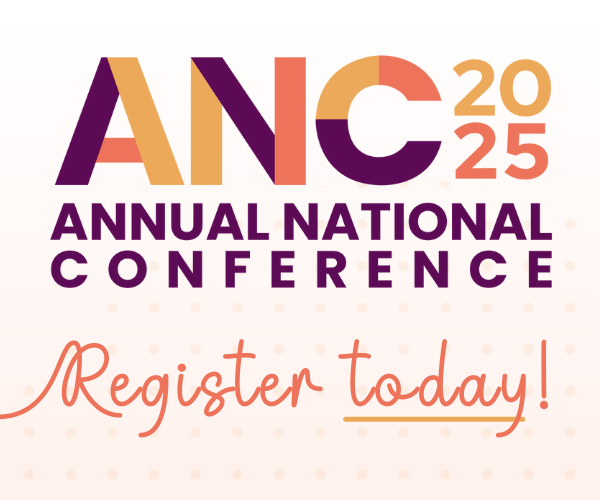FOR IMMEDIATE RELEASE:
Contact: Diane Pratt-Heavner
301-686-3124
media@schoolnutrition.org
SNA Briefings to Explore Impact of School Meal Standards
2015-06-17
WASHINGTON, D.C. – On June 11, 2015, school nutrition professionals from across the country will discuss the impact of new nutrition standards on school meal programs and the students and districts they serve. The discussion is part of two congressional staff briefings the School Nutrition Association (SNA) is hosting as Congress prepares to reauthorize the Healthy Hunger-Free Kids Act of 2010.
Nationwide, 95 percent of schools are meeting the required standards, but compliance has resulted in fewer students eating healthy school lunches and rising costs that are crippling many school meal program budgets. SNA supports most of the mandates, but is calling for increased funding and flexibility under the rules to help ease these challenges (see www.SchoolNutrition.org/PositionPaper).
“Since 2013, 100 percent of North Carolina’s school meal programs have been in compliance with the new school meal standards, but compliance has come at a cost,” says panelist Dr. Lynn Harvey, RD, LDN, FAND, SNS, Chief of School Nutrition Services for North Carolina’s Department of Public Instruction. “Despite an increase in student enrollment, North Carolina has experienced a 5 percent decline in student lunch participation due to the new standards, and breakfast participation is down in more than half of North Carolina’s school districts. Food costs and plate waste are up significantly, but schools have fewer resources to manage these losses, with a la carte revenue down by $20 million under the new Smart Snacks requirements.”
Today’s panelists will cite the many creative ways they have attempted to overcome these challenges, employing new culinary and marketing efforts to make healthier meals more appealing for students.
“At Westside Schools, we are proud to source much of our produce locally, cook menu items from scratch and encourage students to try new foods, like the fresh Atlantic salmon filets we served last month,” says panelist Diane Zipay, Director of Nutrition Services, Westside Community Schools, Omaha, NE. “We want to invest more resources into these initiatives, but the cost of meeting some of the new standards is overwhelming. We are all passionate about serving healthy meals and snacks and teaching kids about food. Unfortunately, some of these arbitrary rules are forcing programs to spend more on packaged foods just to meet regulations, limiting our ability to invest in fresh, wholesome foods and market those healthy choices to students.”
In Lakota Local School District, OH, Chris Burkhardt, Director of Child Nutrition and Wellness, confronts similar challenges head on. “Lakota’s high school cafeterias compete with a dozen fast food restaurants right outside their doors. We are extremely innovative and are offering sushi, made-to-order paninis, rice bowls, tacos and burritos, prepared fresh right in front of the students. Despite these efforts, lunch participation under the new standards is down 15 percent. We are serving 100,000 fewer meals, but costs are up significantly. We have no funding left to invest in further improvements, and our program is ineligible for federal equipment grants or other assistance available to districts with higher free and reduced price participation.”
USDA estimated that schools must absorb $1.2 billion in added costs under the new rules in Fiscal Year 2015 alone, but declining student lunch participation leaves schools with even less revenue to manage higher costs. According to USDA data, more than one million fewer students choose school lunch under the new standards. With research showing that school meals are healthier than food from outside the cafeteria, this decline in participation defeats the goals of the Healthy Hunger-Free Kids Act.
Debbi Beauvais, RDN, CDN, SNS, District Supervisor of School Nutrition Gates Chili, East Rochester & East Irondequoit Schools, NY will also cite concerns that sliding participation increases the stigma on low income students. “The schools I serve are among the 95 percent meeting the new school meal standards, but that doesn’t speak to the resulting higher costs and declining student lunch participation that limit our program,” says Beauvais. “Students used to love the spinach and tomato wraps from our Made-Fresh-for-You bar, but they just don’t like the flavor of the new whole grain wraps. With all the changes, my paying students are walking away from the program. It’s sad to see how these regulations are turning school lunch into a program that just serves free or reduced price eligible students.”
Siri Perlman, RD, Nutrition Specialist, SanDieguito Union HS District, CA, will discuss overly restrictive rules for a la carte sales, effective July 2014. “The new Smart Snacks regulations have not had the intended effect in our district,” Perlman says. “Many students are upset that healthy reimbursable meal entrees can no longer be sold a la carte and that some popular options like hummus and pretzels are off the menu. With a la carte choices so limited, many students go off campus for fast food, soda and sugary snacks. We have experienced a 10 percent drop in revenue and anticipate a nearly $175,000 loss this school year. Allowing reimbursable entrees to be sold a la carte every day would provide students with a larger variety of nutritious choices and help to restore our financial solvency. Food is only nutritious if they eat it.”
SNA President Julia Bauscher, SNS, Director of School and Community Nutrition Services for Jefferson County Public Schools, KY, will moderate the discussion. Bauscher recently testified to challenges in her school meal program during hearings before the House Education and Workforce and Senate Agriculture Committees. Click here and here to read her testimony. Additional examples of cafeteria challenges can be found here.
About School Nutrition Association:
The School Nutrition Association (SNA) is a national, non-profitprofessional organization representing 55,000 school nutrition professionalsacross the country. Founded in 1946, SNA and its members are dedicated tomaking healthy school meals and nutrition education available to all students. For more information on school meals, visit www.SchoolNutrition.org/SchoolMeals.
Related Articles

SNA Urges MAHA Commission to Invest in School Meals
Read More

School Nutrition Professionals to Implore Congress to Protect School Meals
Read More




